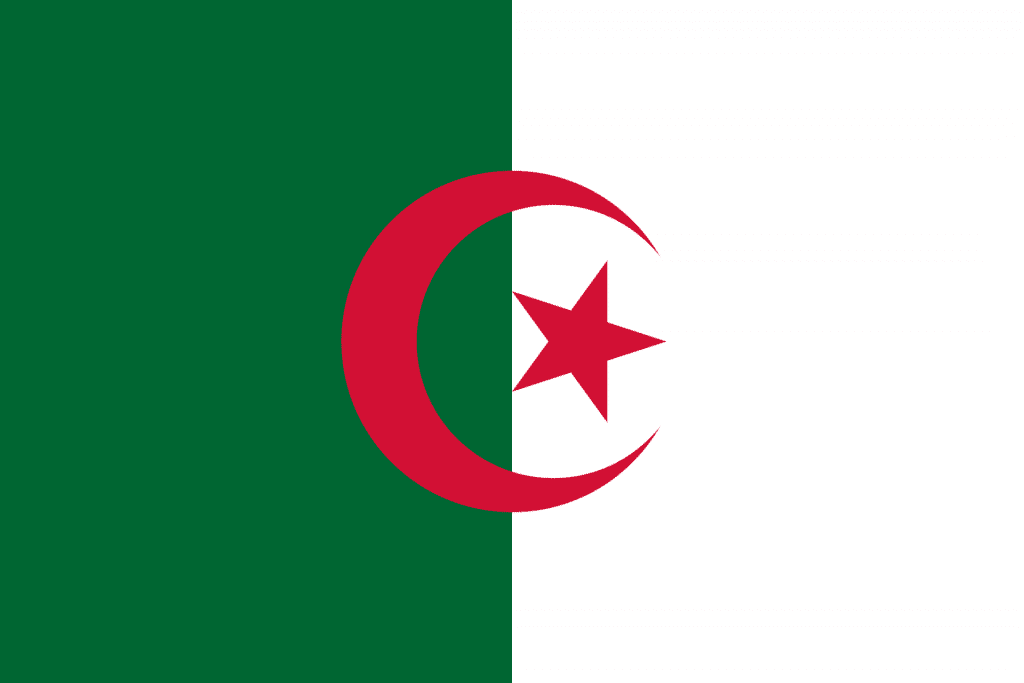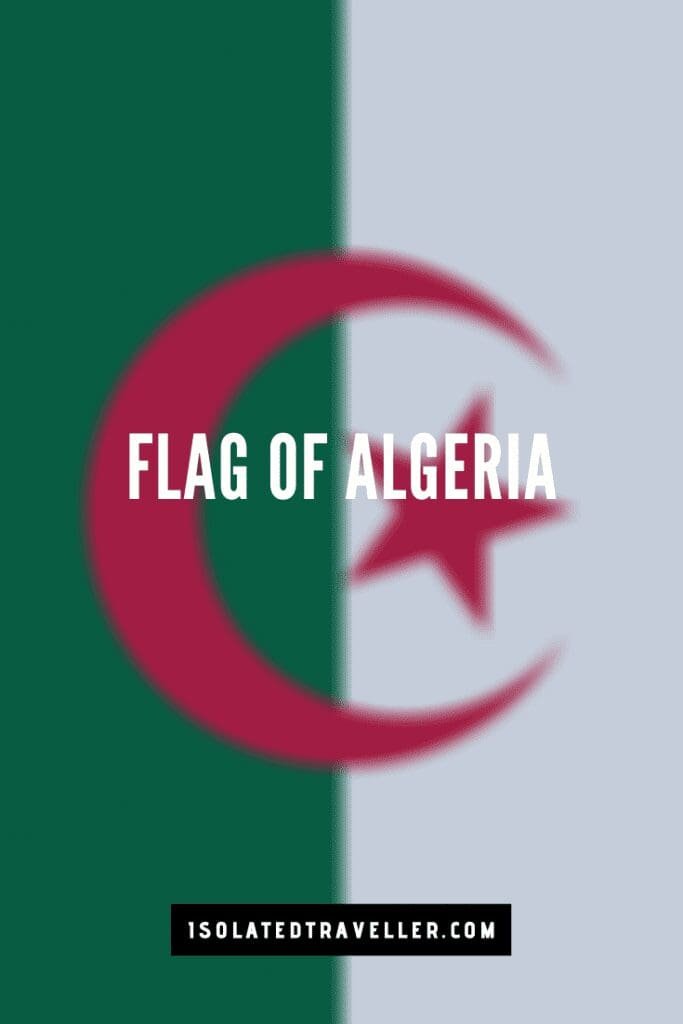Flag of Algeria
The national flag of Algeria was adopted on the 3rd of July 1962, It consists of two equal vertical bars, green and white, In the centre with a red star and crescent, a symbol of Islam as the nation’s prominent faith.

Flag Design and Colour Scheme
The Algerian flag is a vertical bicolour consisting of green and white, with a red crescent and star in the centre.
- The colour green is associated with Islam and represents the country’s predominant religion. It symbolizes peace, growth, and fertility, reflecting the natural beauty and rich agricultural heritage of Algeria.
- White is a symbol of purity and innocence and represents the desire for a peaceful and united nation, free from oppression and conflict.
- The red crescent and star are iconic symbols of Islam and the crescent represents progress and development, while the star symbolizes light, guidance, and the five pillars of Islam.
History of the Flag of Algeria
In earlier history before Algeria, the Berber Dynasties ruled the area known as Algeria, In 1229 The Zayyanid Dynasty ruled the Kingdom of Tlemcen, which was an area of north-western Algeria, and their flag was a blue field with a white crescent moon. At the same time, the Hafsid Dynasty had territories stretched from east of modern Algeria to Libya.
The region of Algeria was part of the Ottoman Empire, which ruled until it became part of the French Territory.
The flag was adopted by the National Liberation Front during the Algerian War of Independence, which lasted from 1954 to 1962. After gaining independence from France, the flag was officially adopted on July 3, 1962.
Frequently Asked Questions
Why Does the Algerian Flag Feature a Star and Crescent?
The star and crescent on the Algerian flag are symbols of Islam, which is the prominent faith in Algeria. The star represents light and guidance, while the crescent symbolizes purity and progress. Together, they reflect Algeria’s religious and cultural heritage.
How Is the Algerian Flag Used in Official Ceremonies?
The Algerian flag is prominently displayed and honoured during official ceremonies and national events. It is raised in public spaces and government buildings, and special protocols are followed to ensure its proper display and placement. The flag serves as a symbol of national pride and unity.


